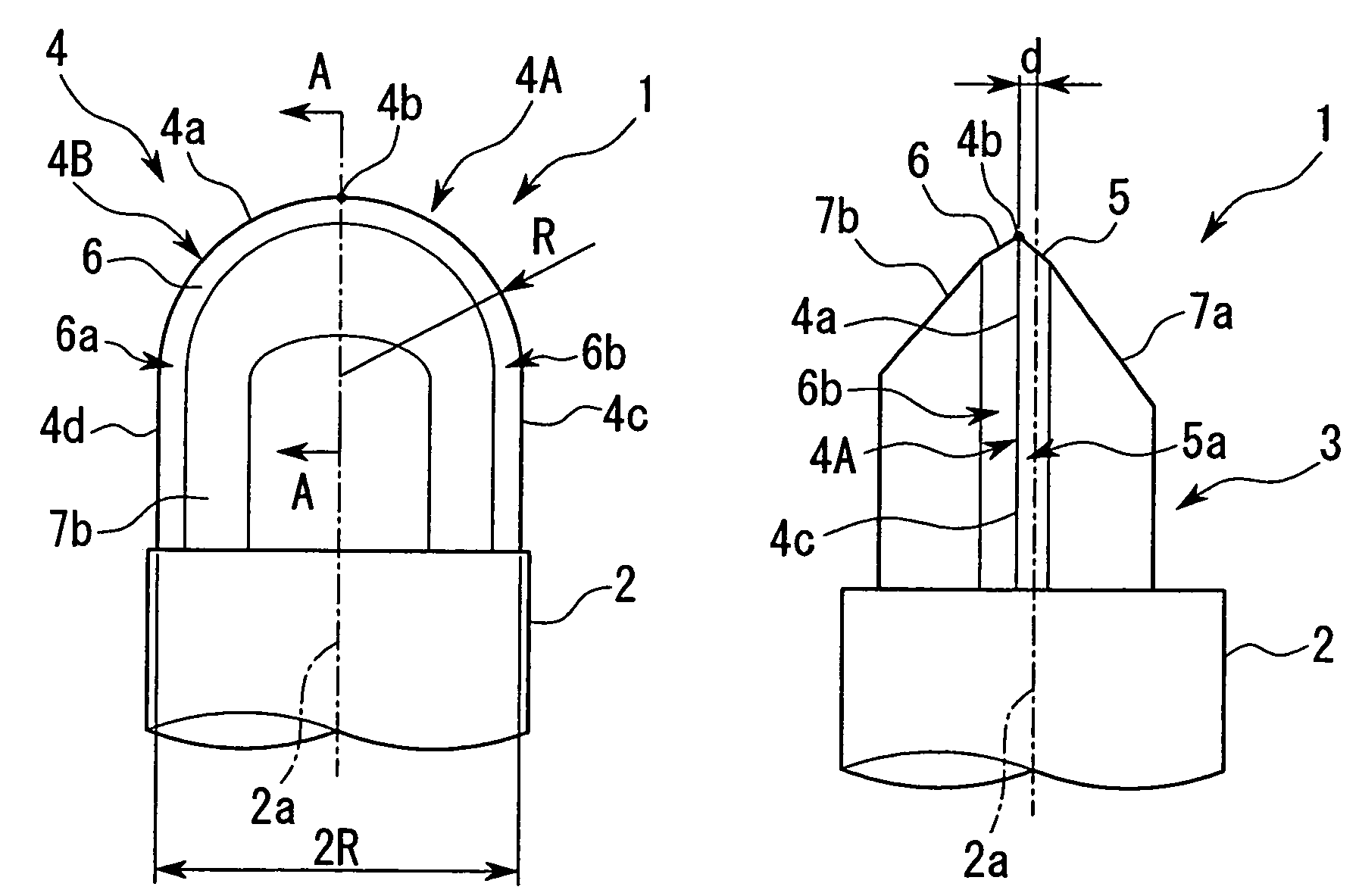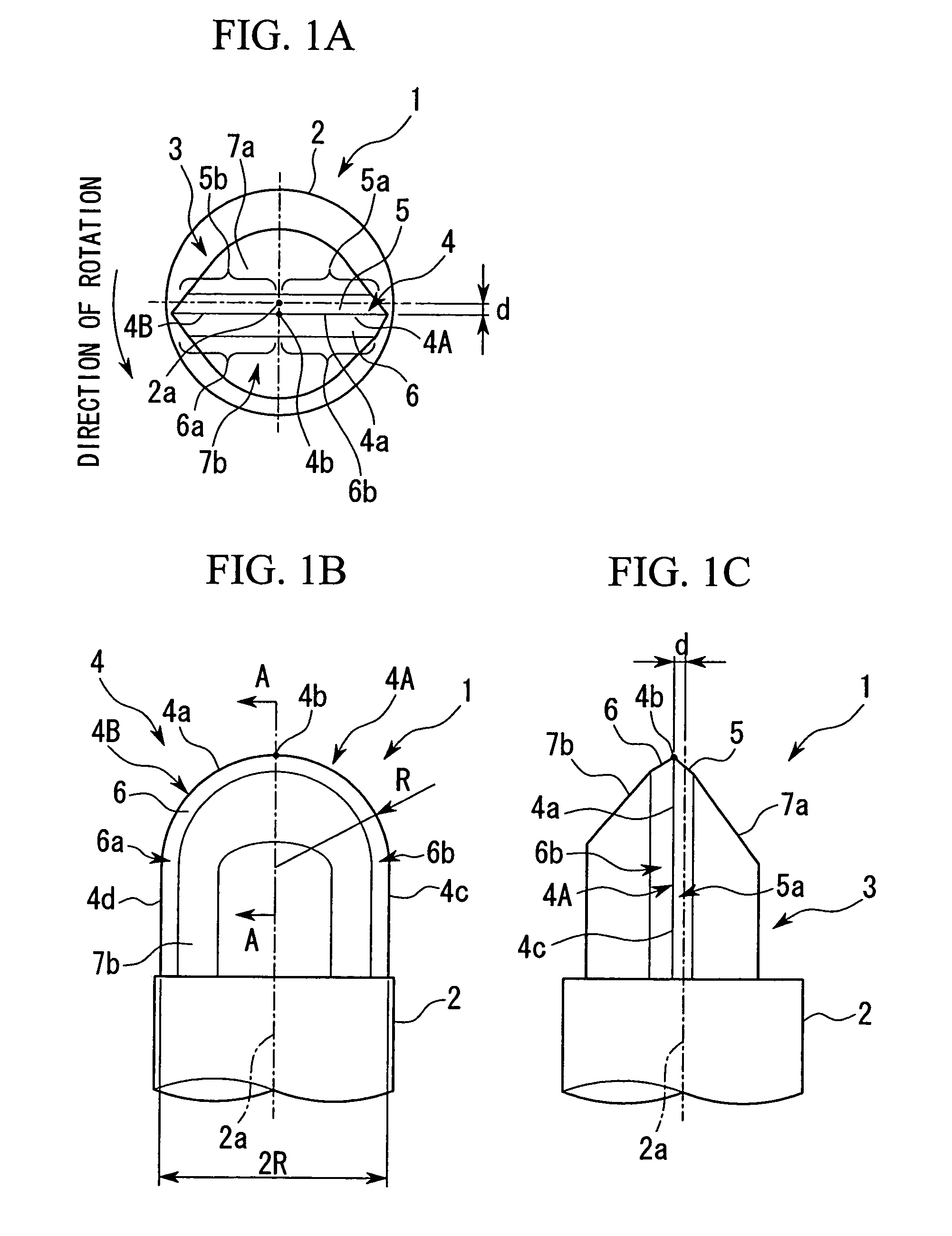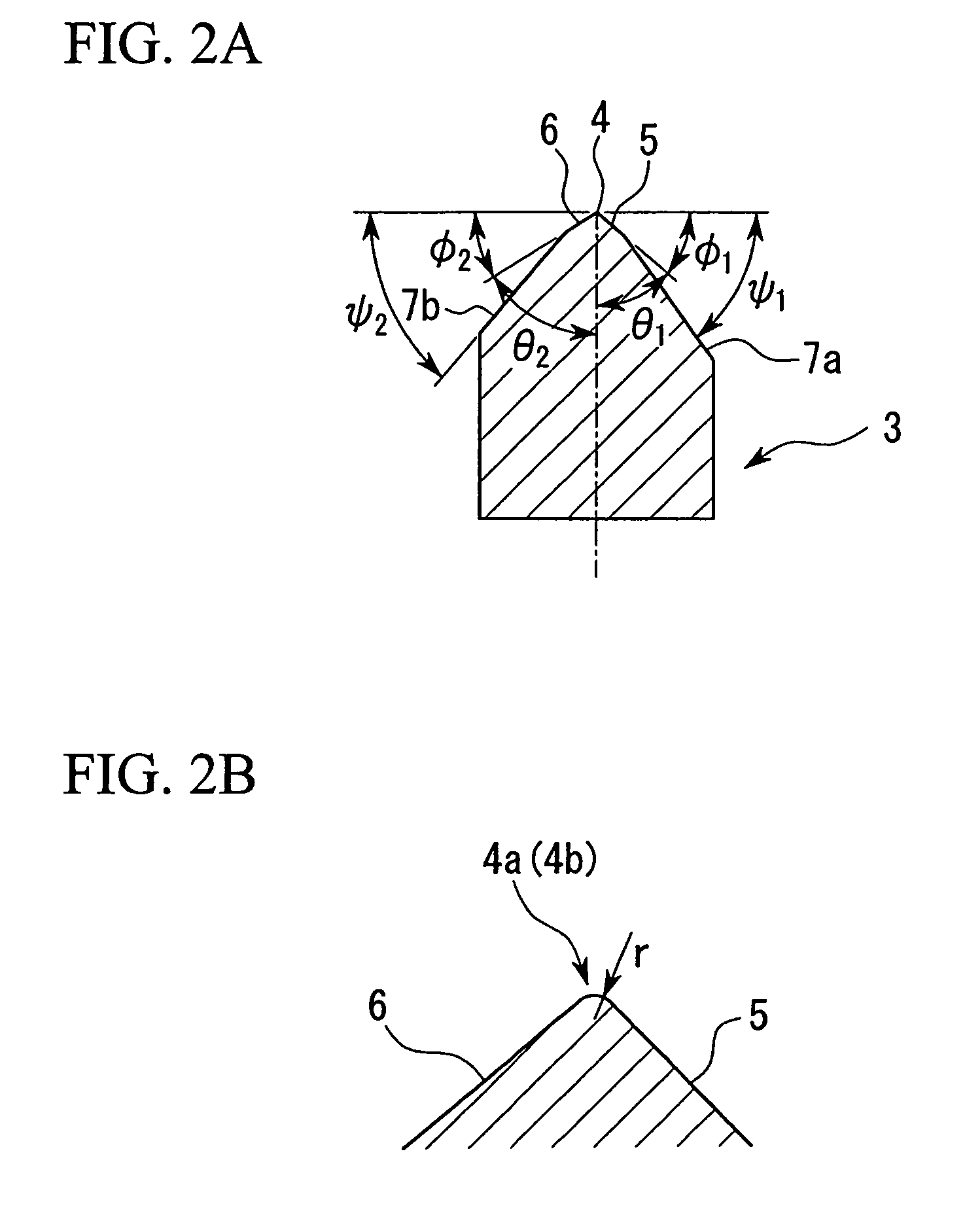Ball end mill
- Summary
- Abstract
- Description
- Claims
- Application Information
AI Technical Summary
Benefits of technology
Problems solved by technology
Method used
Image
Examples
Embodiment Construction
[0035]A preferred embodiment of this invention will be described with reference to the accompanying drawings.
[0036]FIGS. 1A, 1B, and 1C respectively show a plan view, a front view, and a side view, of a ball end mill according to an embodiment of this invention. FIG. 2A is a cross-sectional view taken along the line A-A of FIG. 1B, and FIG. 2B is an enlarged view of this section.
[0037]The ball end mill according to the embodiment of this invention basically comprises a shank (tool main body) 2 and a cutting blade section 3.
[0038]The shank 2 is a circle-headed column-like member having a predetermined circle diameter and a predetermined length, and a shank axis 2a which constitutes a central axis of the circle-headed column exactly matches a rotational axis of the ball end mill 1 at the time of cutting.
[0039]A cutting blade section 3 is installed at the end of the shank 2, and as shown in FIGS. 1B and 1C, its tip side has a semi-circular U-shape when viewed from the front, and its ti...
PUM
 Login to View More
Login to View More Abstract
Description
Claims
Application Information
 Login to View More
Login to View More - R&D Engineer
- R&D Manager
- IP Professional
- Industry Leading Data Capabilities
- Powerful AI technology
- Patent DNA Extraction
Browse by: Latest US Patents, China's latest patents, Technical Efficacy Thesaurus, Application Domain, Technology Topic, Popular Technical Reports.
© 2024 PatSnap. All rights reserved.Legal|Privacy policy|Modern Slavery Act Transparency Statement|Sitemap|About US| Contact US: help@patsnap.com










